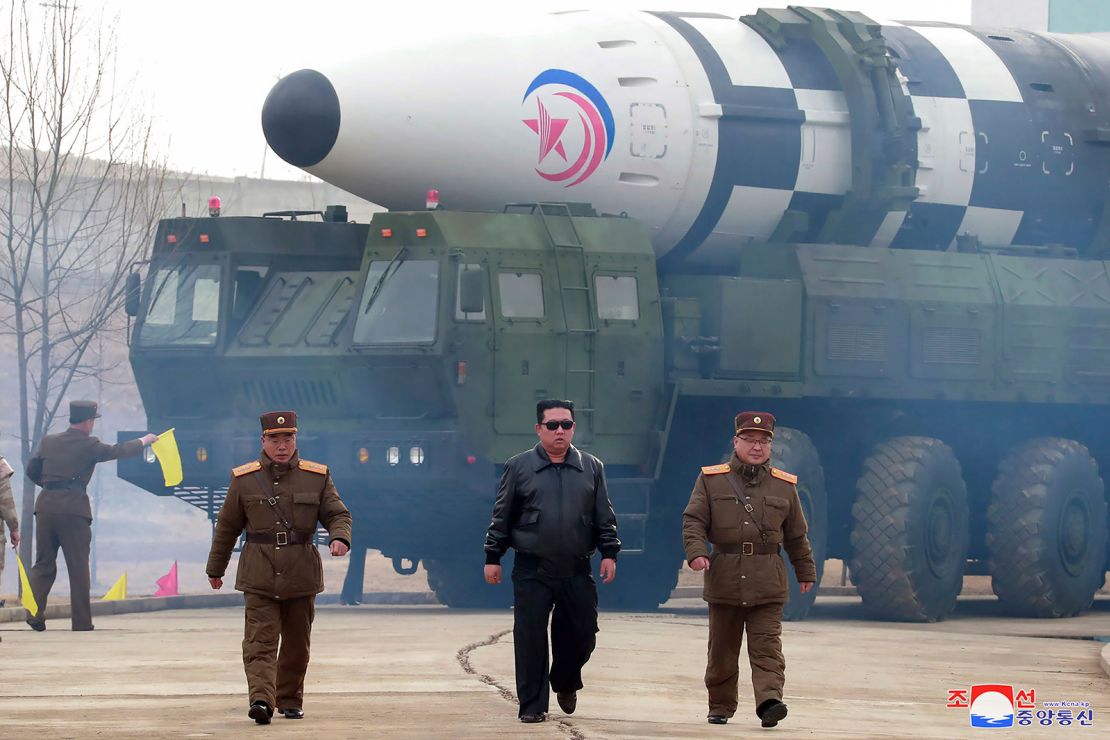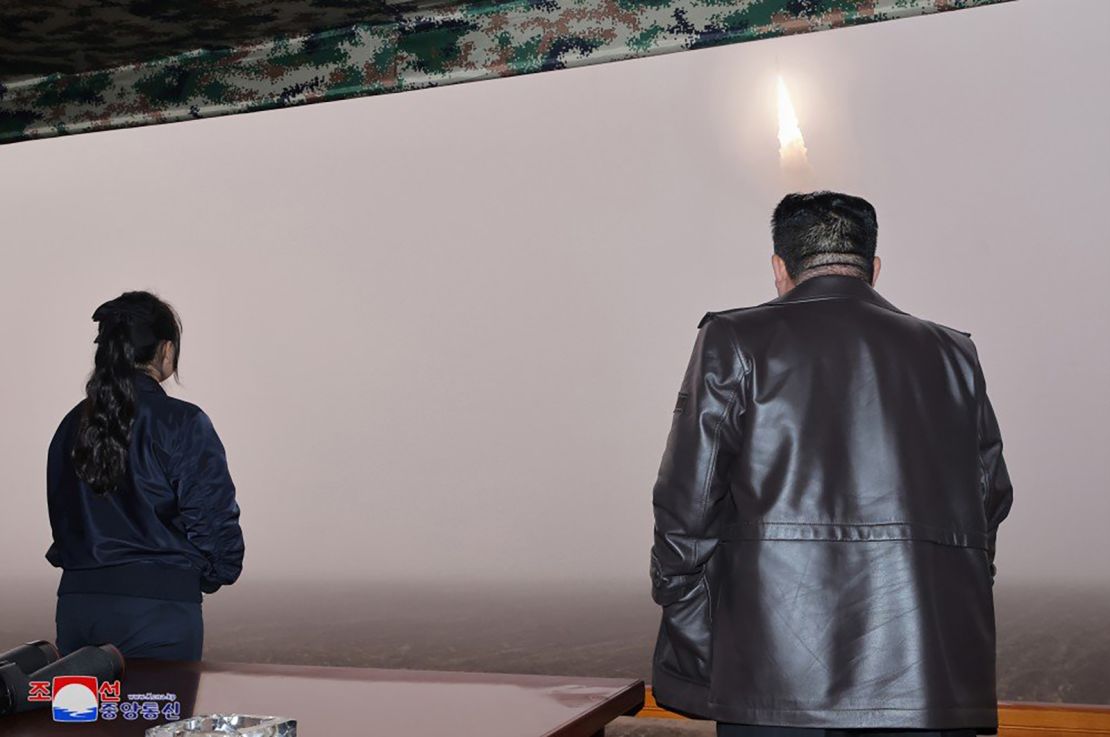North Korea said it tested a new intercontinental ballistic missile on Thursday morning, a launch believed to have achieved the longest flight time yet for a North Korean missile.
The new “perfected” Hwasong-19 missile was launched just days before the United States presidential election on Tuesday, and after warnings from South Korea’s intelligence agency that Pyongyang was planning to launch an ICBM to test its reentry technology around the time of the vote.
The test also comes as North Korea appears to have intensified its nuclear production efforts and strengthened ties with Russia, deepening widespread concern in the West over the isolated nation’s direction.
North Korea on Friday said the new Hwasong-19 missile reached a maximum altitude of 7,688 kilometers (4,777 miles) and flew a distance of 1,001 kilometers (622 miles).
“The test of the latest strategic weapon system … demonstrated the modernity and creditability of its world’s most powerful strategic deterrent,” the country’s state-run KCNA news outlet said in a commentary.

Japanese authorities reported the missile flew for about 86 minutes and to a possible altitude of 7,000 kilometers (4,350 miles), before falling into the sea west of Okushiri Island in northern Hokkaido around 8:37 a.m., outside Japan’s exclusive economic zone, public broadcaster NHK said.
“The flight time was the longest ever. Possibly the newest missile ever,” Japanese Defense Minister Gen Nakatani said.
South Korea’s Joint Chiefs of Staff (JCS) said the missile was fired at “a lofted angle,” meaning it flew almost vertically upwards rather than out, and traveled a distance of 1,000 kilometers (620 miles).
JCS spokesperson Lee Sung-joon said it could have been a “new-type solid-propelled long-range ballistic missile” fired from a 12-axis mobile launcher (TEL) which Pyongyang revealed last month.
Solid-fueled missiles, such as North Korea’s Hwasong-18, would allow Pyongyang to launch long-range nuclear strikes quicker than with missiles that use liquid-fuel technology.
Solid-fueled ICBMs are more stable, and can be moved more easily to avoid detection before a launch that can be initiated in a matter of minutes, experts say – compared with liquid-fueled missiles that may need hours before launch, giving time for adversaries to detect and neutralize the weapon.
State media published photos of North Korean leader Kim Jong Un and his daughter at the launch site as well as multiple photos of the missile throughout its journey.

Joseph Dempsey, a research analyst at the International Institute for Strategic Studies, said the pictures released by North Korea showed the latest missile was “outwardly similar in design to the Hwasong-18”.
“But when it comes to a road-mobile cold-launch solid ICBM there is a form follows function component so [we] would not expect too much variation in broad design terms,” he told CNN.
It appears to be North Korea’s first ICBM launch since its Hwasong-18 missile test in December 2023. It also launched the weapon in April and July last year.
During the December test, Japanese authorities reported the missile flew at a highly lofted trajectory for about 73 minutes and to an altitude of 6,000 kilometers (3,700 miles).
The missile from Thursday’s test flew higher than North Korea’s previous ICBM test, according to initial analysis by the South Korean military.
While the missile exhibited the range to strike anywhere in the United States, it would need to be fired at a flatter trajectory to hit the country.
The White House condemned the test Thursday as “a flagrant violation of multiple UN Security Council resolutions.” National Security Council spokesperson Sean Savett said the launch “needlessly raises tensions” in the region and that the US would “take all necessary measures to ensure the security of the American homeland and Republic of Korea and Japanese allies.”
In response to the missile test, South Korea and the US held a joint large-scale air drill involving some 110 jets simulating “precise striking of enemy’s TEL,” Seoul’s Defense Ministry said.
“Our military will always maintain preparedness and capability to respond overwhelmingly to any provocation by North Korea,” the ministry said.
Nuclear weapons tech and ties with Russia
Speaking at the launch site, Kim affirmed that his country “will never change its line of bolstering up its nuclear forces,” KCNA reported Thursday.
In addition to an ICBM test, South Korea’s military intelligence agency also warned North Korea could soon conduct its seventh nuclear test.
On Wednesday, the agency said Pyongyang had finished preparations for such a test at its Punggye-ri test site, and that the test could happen around the time of the US election, according to two lawmakers briefed during a regular parliamentary meeting.
Since conducting its first nuclear test more than a decade ago, North Korea has advanced its weapons capabilities, with the ambition of miniaturizing a warhead so that it can fit on a long-range missile.
The launch comes after US and South Korean officials said thousands of North Korean troops are training in Russia, with the expectation that they are being readied for a potential move to the front lines of Moscow’s war against Ukraine.
About 10,000 North Korean soldiers are receiving military training in eastern Russia, the Pentagon estimated on Monday. US Defense Secretary Lloyd Austin said Wednesday that some troops have moved closer to Ukraine and have been given Russian military uniforms and are using Russian equipment.
South Korean Defense Minister Kim Yong Hyun said North Korea is “very likely to ask” Moscow for advanced technology related to nuclear weapons in exchange for deploying troops to help Russia.
Pyongyang will likely request Russian technology transfers relating to tactical nuclear weapons, the advancement of North Korean intercontinental ballistic missiles, reconnaissance satellites and nuclear submarines, the minister said.
CNN’s Brad Lendon and Natasha Bertrand contributed reporting.







